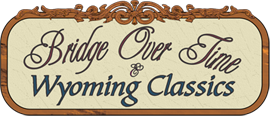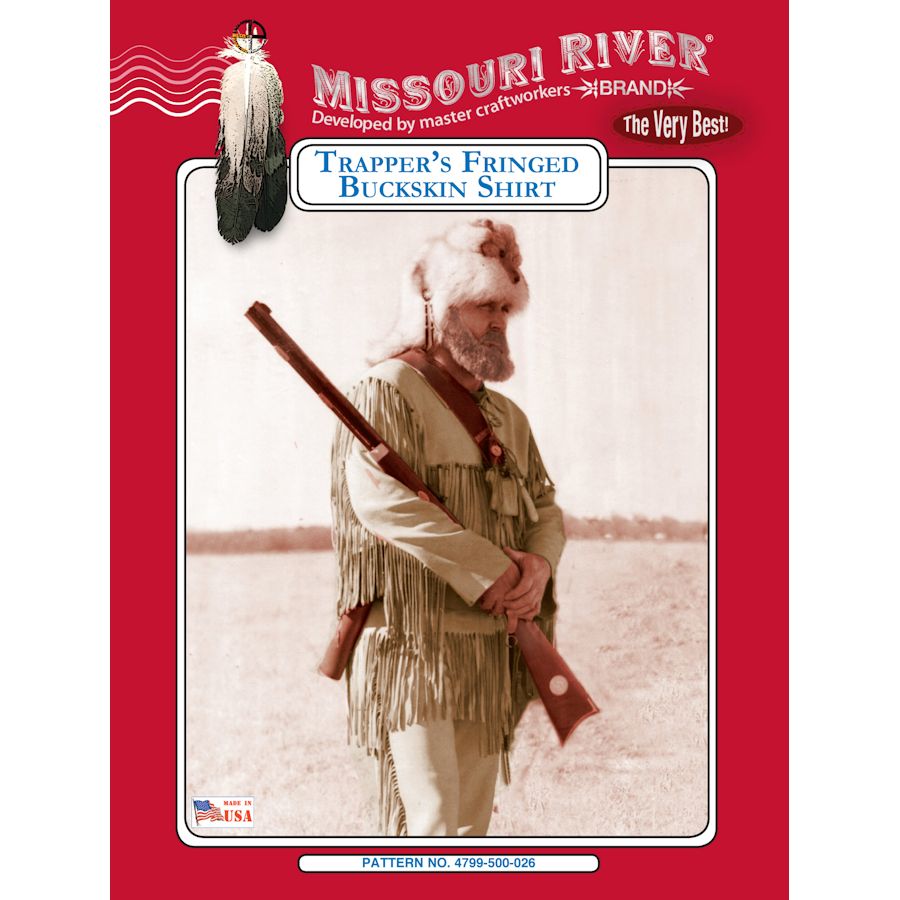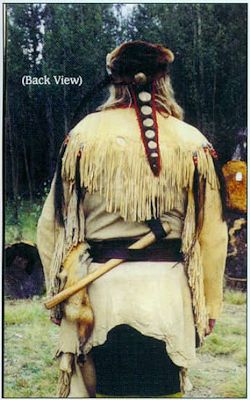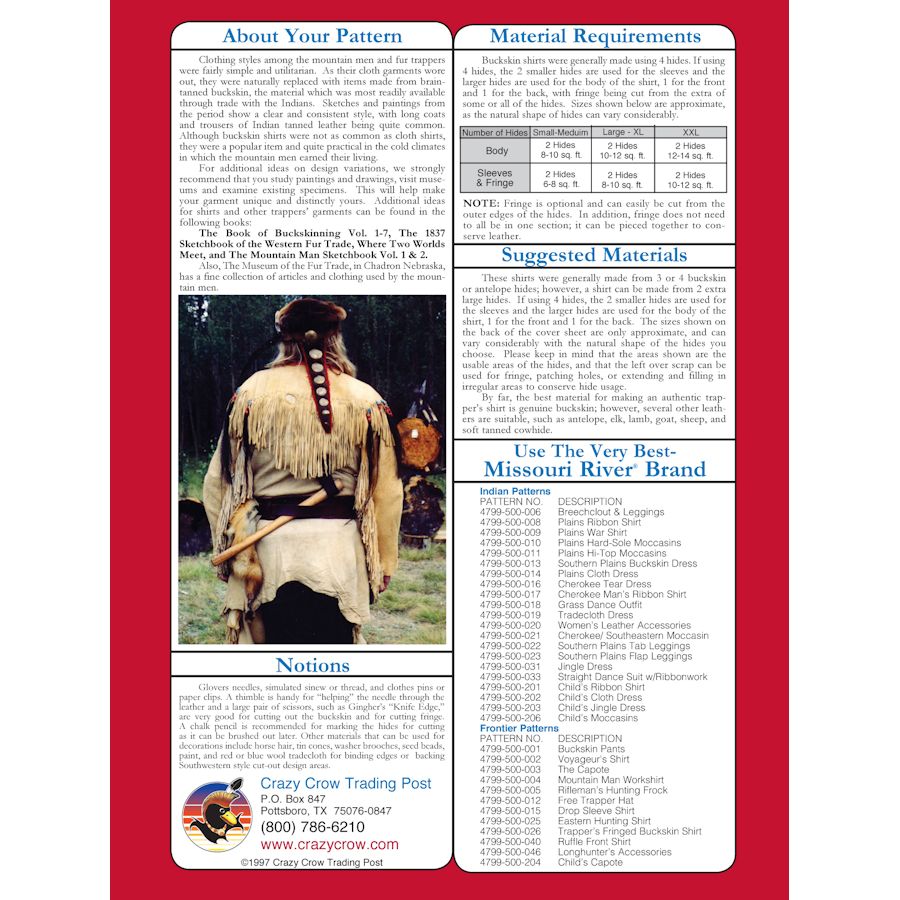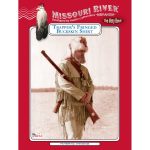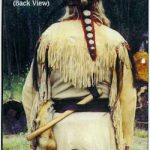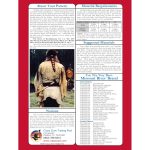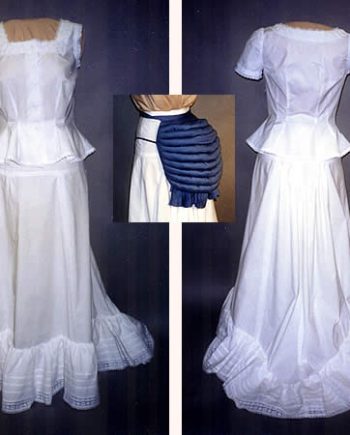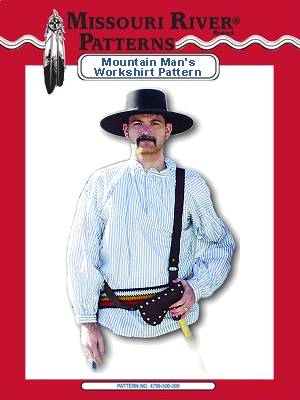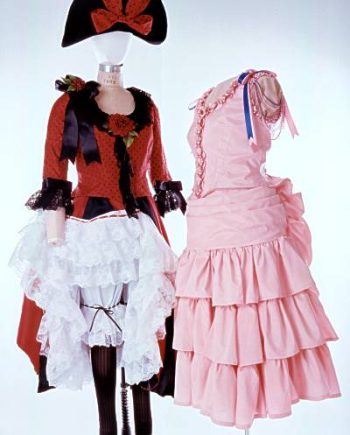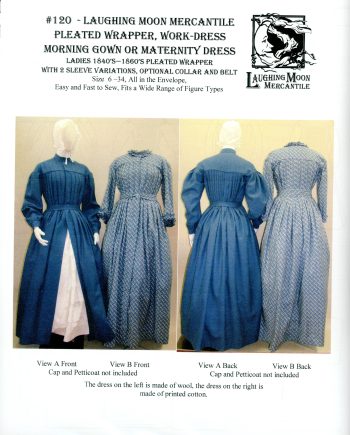Description
About Your Trapper Fringe Buckskin Shirt Pattern
Clothing styles among the mountain men and fur trappers were fairly simple and utilitarian. As their cloth garments wore out, they were naturally replaced with items made from brain-tanned buckskin, the material which was most readily available through trade with the Indians. Sketches and paintings from the period show a clear and consistent style with long coats and trousers of Indian tanned leather being quite common. Although buckskin shirts were not as common as cloth shirts, they were a popular item and quite practical in the cold climates in which the mountain men earned their living.
For additional ideas on design for buckskin shirt variations, we strongly recommend that you study paintings and drawings, visit museums and examine existing specimens. This will help make your garment unique and distinctly yours. Additional ideas for buckskin shirts and other trappers’ garments can be found in the following books:
The Book of Buckskinning Vol 1-7, The 1837 Sketchbook of the Western Fur Trade, Where Two Worlds Meet, and The Mountain Man Sketchbook Vol. 1 & 2.
Also, The Museum of the Fur Trade, in Chadron Nebraska, has a fine collection of articles and clothing used by the mountain men.
Notions & Tools
Glovers needles, simulated sinew or thread, and clothes pins or paper clips. A thimble is handy for “helping” the needle through the leather and a large pair of scissors, such as Gingher’s “knife Edge”, are very good for cutting out the buckskin and for cutting fringe. A chalk pencil is recommended for marking the hides for cutting as it can be brushed out later.
Other materials that can be used for decorations include horse hair, tin cones, washer brooches, seed beads, paint, and red or blue wool tradecloth for binding edges or backing Southwestern style cut-out design areas.
Material Requirements
Buckskin shirts were generally made using 4 hides. If using 4 hides, the 2 smaller hides are used for the sleeves and the larger hides are used for the body of the shirt, 1 for the front and 1 for the back, with fringe being cut from the extra of some or all of the hides. Sizes shown below are approximate, as the natural shape of hides can vary considerably.

NOTE: Fringe is optional and can easily be cut from the outer edges of the hides. In addition, fringe does not need to all be in one section; it can be pieced together to conserve leather.
Suggested Materials
Buckskin shirts were generally made using 4 hides. If using 4 hides, the 2 smaller hides are used for the sleeves and the larger hides are used for the body of the shirt, 1 for the front and 1 for the back, with fringe being cut from the extra of some or all of the hides. Sizes shown below are approximate, as the natural shape of hides can vary considerably. Please keep in mind that the areas shown are the usable areas of the hides, and that the left over scrap can be used for fringe, patching holes, or extending and filling in irregular areas to conserve hide usage.
By far, the best material for making an authentic trapper’s shirt is genuine buckskin; however several other leathers are suitable, such as antelope, elk, lamb, goat, sheepsheep, and soft tanned cowhide.
